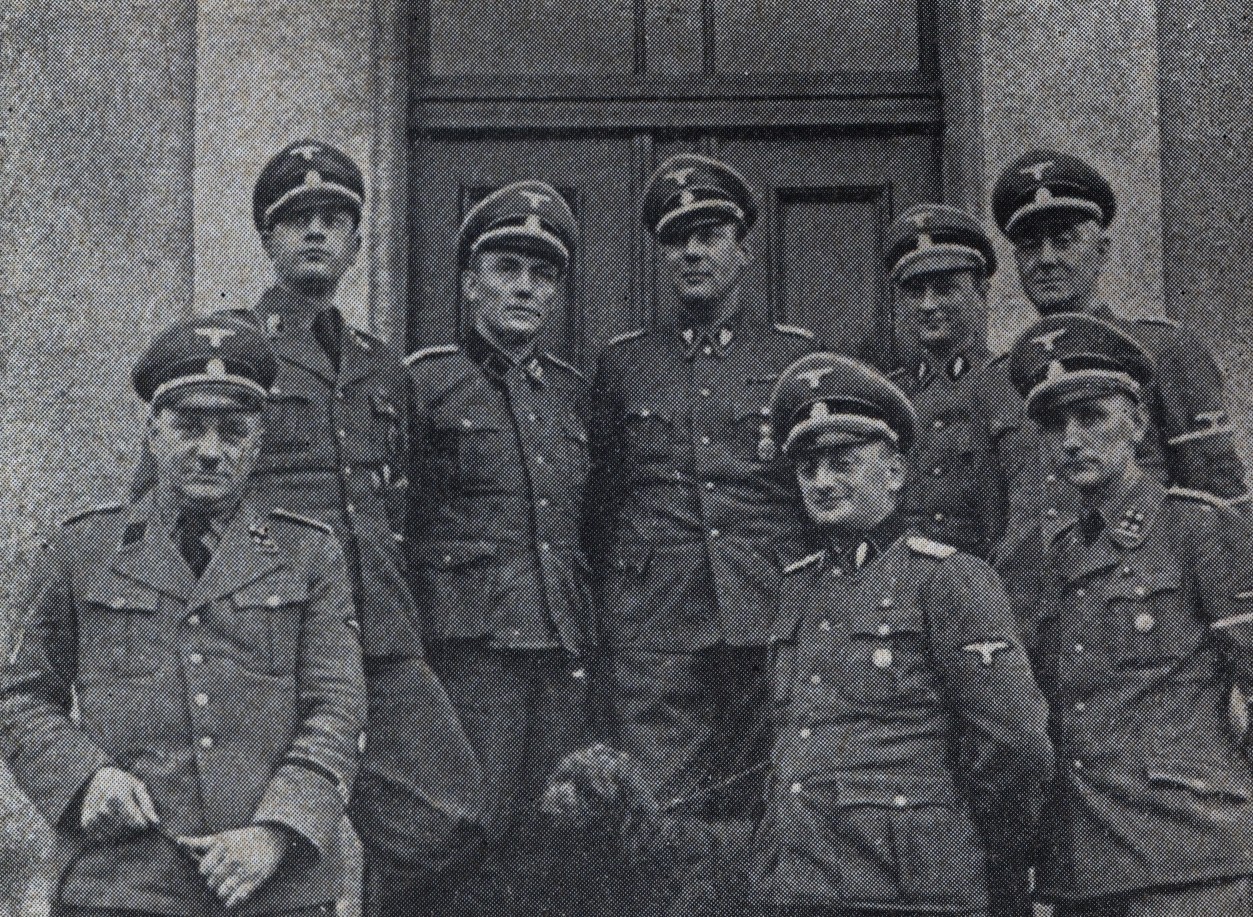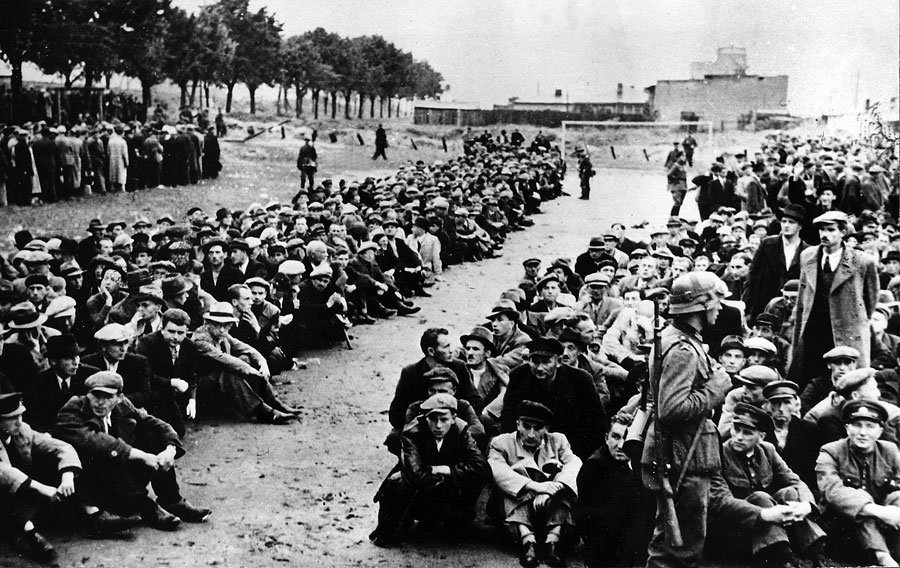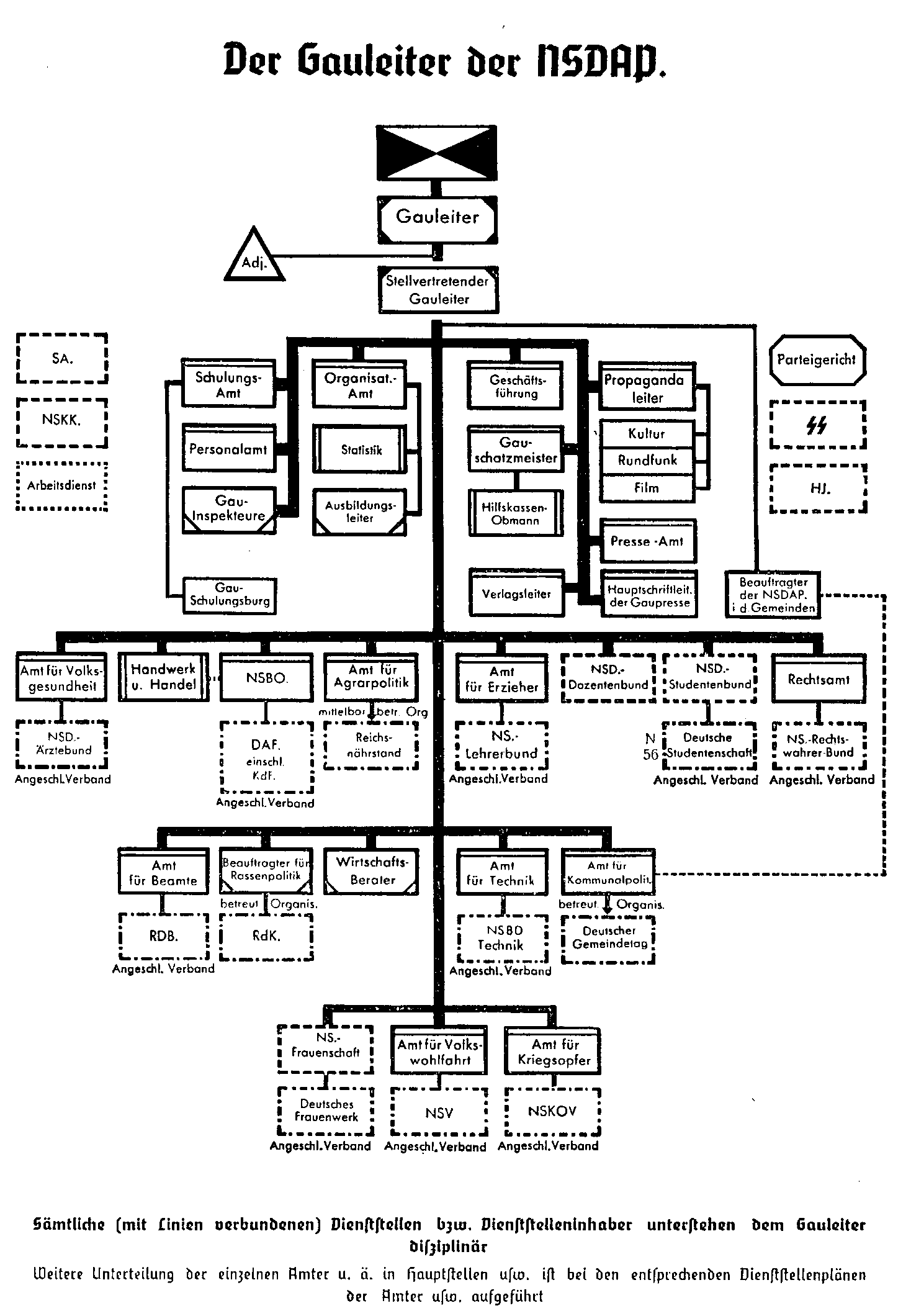|
Karolewo Concentration Camp
Karolewo concentration camp (German: ''Internierungslager Karlshof'') was a makeshift concentration camp for residents of Krajna, established by the German ''Volksdeutscher Selbstschutz'' on the estate of Karolewo near Więcbork. It operated from mid-September to mid-December 1939. The internment camp in Karolewo held residents of Sępólno County and neighboring counties, arrested in the first months of the German occupation as part of the so-called '' Intelligenzaktion Pommern''. In the camp, they were starved, forced into exhausting labor, and subjected to inhumane treatment. The ''Internierungslager Karlshof'' was primarily created for the clandestine liquidation of prisoners – most of the detained Poles were executed in nearby forests. Post-war exhumations uncovered the remains of 1,781 people murdered in the camp in the autumn of 1939. Some sources suggest the number of victims may have reached several thousand. The Karolewo camp is considered one of the largest sites o ... [...More Info...] [...Related Items...] OR: [Wikipedia] [Google] [Baidu] |
Karolewo, Sępólno County
Karolewo is a village in the administrative district of Gmina Więcbork, within Sępólno County, Kuyavian-Pomeranian Voivodeship, in north-central Poland. It lies approximately east of Więcbork, south-east of Sępólno Krajeńskie, and north-west of Bydgoszcz. On 17 September 1939, one of the many camps in Pomerania (''Internierungslager Karlshof'') was established in Karolewo. It was intended for the extermination of the Polish and Jewish populations from the counties of Sępólno, Tuchola, Bydgoszcz, , and Chojnice Chojnice (; or ; or ) is a town in northern Poland with 38,789 inhabitants, as of June 2023, near the Tuchola Forest. It is the capital of the Chojnice County in the Pomeranian Voivodeship. Founded in , Chojnice is a former royal city of Poland .... The camp was dissolved in mid-December 1939. According to various sources, between 4,000 and 10,000 people were murdered there. References Villages in Sępólno County {{Sępólno-geo-stub ... [...More Info...] [...Related Items...] OR: [Wikipedia] [Google] [Baidu] |
Volksdeutsche
In Nazi Germany, Nazi German terminology, () were "people whose language and culture had Germans, German origins but who did not hold German citizenship." The term is the nominalised plural of ''wikt:volksdeutsch, volksdeutsch'', with denoting a singular female, and , a singular male. The words ''Volk (German word), Volk'' and ''Völkisch movement, völkisch'' conveyed the meanings of "folk". Ethnic Germans living outside Germany shed their identity as ''Auslandsdeutsche'' (Germans abroad), and morphed into the in a process of self-radicalisation. This process gave the Nazi regime the nucleus around which the new Volksgemeinschaft was established across the German borders. were further divided into "racial" groupsminorities within a state minoritybased on special cultural, social, and historic criteria elaborated by the Nazis. Origin of the term ''Volksdeutsche'' According to the historian Doris Bergen, Adolf Hitler Neologism, coined the definition of which appeared in a 1 ... [...More Info...] [...Related Items...] OR: [Wikipedia] [Google] [Baidu] |
Second Polish Republic
The Second Polish Republic, at the time officially known as the Republic of Poland, was a country in Central and Eastern Europe that existed between 7 October 1918 and 6 October 1939. The state was established in the final stage of World War I. The Second Republic was taken over in 1939, after it was invaded by Nazi Germany, the Soviet Union, and the Slovak Republic, marking the beginning of the European theatre of the Second World War. The Polish government-in-exile was established in Paris and later London after the fall of France in 1940. When, after several regional conflicts, most importantly the victorious Polish-Soviet war, the borders of the state were finalized in 1922, Poland's neighbours were Czechoslovakia, Germany, the Free City of Danzig, Lithuania, Latvia, Romania, and the Soviet Union. It had access to the Baltic Sea via a short strip of coastline known as the Polish Corridor on either side of the city of Gdynia. Between March and August 1939, Poland a ... [...More Info...] [...Related Items...] OR: [Wikipedia] [Google] [Baidu] |
Selbstschutz
''Selbstschutz'' (German for "self-protection") is the name given to different iterations of ethnic-German self-protection units formed both after the First World War and in the lead-up to the Second World War. The first incarnation of the ''Selbstschutz'' was a German paramilitary organisation formed after World War I for ethnic Germans who lived outside Germany in the territories occupied by Germany and Austria-Hungary following the conclusion of the Treaty of Brest-Litovsk. The purpose of these units was to protect local ethnically German communities and, indirectly, to serve German security interests in southern Ukraine. Another iteration of the ''Selbstschutz'' concept was established in Silesia and aimed at returning Polish-inhabited territories back to Germany following the proclamation of the Second Polish Republic. In 1921, units of ''Selbstschutz'' took part in the fighting against the Polish Third Silesian Uprising. The third incarnation operated in territories of Ce ... [...More Info...] [...Related Items...] OR: [Wikipedia] [Google] [Baidu] |
Kamień Krajeński
Kamień Krajeński (; ''Kamień Pomorski'' between 1920–1945; ) is a town in Sępólno County, Kuyavian-Pomeranian Voivodeship in northern Poland, with 2,344 inhabitants (2010). It is located within the ethnocultural region of Krajna. History The first historical record of Kamień comes from 1107. Its name means "stone" in Polish. It was a seat of a castellany during the reign of Bolesław III Wrymouth of Poland. In the thirteenth century it belonged to the Archbishop of Gniezno. It was briefly occupied by the Teutonic Knights in 1339 before reverting to Poland. In 1359 it received municipal rights from Archbishop Jarosław. Shortly after a defensive castle was built which survived until 1721. Administratively it was located in the Nakło County in the Kalisz Voivodeship in the Greater Poland Province. After the First Partition of Poland in 1772, Kamień was annexed by the Kingdom of Prussia, and under the Germanized name ''Kamin,'' it formed part of the Flatow district ( ... [...More Info...] [...Related Items...] OR: [Wikipedia] [Google] [Baidu] |
Reichsgau Danzig-West Prussia
Reichsgau Danzig-West Prussia () was an Reichsgau, administrative division of Nazi Germany created on 8 October 1939 from annexed territory of the Free City of Danzig, the Greater Pomeranian Voivodship (Polish Corridor), and the Marienwerder (region), ''Regierungsbezirk'' West Prussia of ''Gau (country subdivision), Gau'' East Prussia. Before 2 November 1939, the Reichsgau was called Reichsgau West Prussia. Though the name resembled that of the pre-1920 Provinces of Prussia, Prussian province of West Prussia, the territory was not identical. Unlike the former Prussian province, the ''Reichsgau'' included the Bromberg (Bydgoszcz) region in the south and lacked the ''Deutsch-Krone'' (Wałcz) region in the west. The province's capital was Danzig (Gdańsk), and its population without the city was (in 1939) 1,487,452. The province's area was 26,056 km2, 21,237 km2 of which was annexed Free City of Danzig, Danzig and Pomeranian Voivodeship (1919–1939), Pomeranian territory.P ... [...More Info...] [...Related Items...] OR: [Wikipedia] [Google] [Baidu] |
Bydgoszcz District
Bydgoszcz District (Polish: ''Rejencja Bydgoska'', German ''Regierungsbezirk Bromberg'') was the more northern of two administrative districts of the Grand Duchy of Poznań (1815-1918) (later also called the Province of Poznań (1849-1918)). It underwent several changes during World War II. Administrative division (in 1897) * Bydgoszcz District (Rejencja Bydgoska), Bydgoszcz (English county name, Polish county name, county town) ''(please note that at this time Polish county names were written with capital letters)'' :* Bydgoszcz City, (Miasto Bydgoszcz), Bydgoszcz :* Bydgoszcz County, (Powiat Bydgoski), Bydgoszcz :* Chodzież County, (Powiat Chodzieski), Chodzież :* Gniezno County, (Powiat Gnieźnieński), Gniezno :* Inowrocław County, (Powiat Inowrocławski), Inowrocław :* Mogilno County, (Powiat Mogileński), Mogilno :* Strzelno County, (Powiat Strzelneński), Strzelno :* Szubin County, (Powiat Szubiński), Szubin :* Wągrowiec County, (Powiat Wągrowiecki), Wągrowiec ... [...More Info...] [...Related Items...] OR: [Wikipedia] [Google] [Baidu] |
Polish Areas Annexed By Nazi Germany
Following the Invasion of Poland at the beginning of World War II, nearly a quarter of the entire territory of the Second Polish Republic was Areas annexed by Nazi Germany, annexed by Nazi Germany and placed directly under the German civil administration. The rest of Nazi-occupied Poland was renamed as the General Government district. The annexation was part of the Partition of Poland#"Fourth Partition", "fourth partition of Poland" by Nazi Germany and the Soviet Union, outlined months before the invasion, in the Molotov–Ribbentrop Pact.Maly Rocznik Statystyczny (wrzesien 1939 – czerwiec 1941), Ministerstwo Informacji i Documentacji, London 1941, p.5, as cited in Piotr Eberhardt, Political Migrations in Poland, 1939–1948, Warsaw 2006, p.4 Some smaller territories were incorporated directly into the existing Gau (administrative division), Gaue Gau East Prussia, East Prussia and Gau Silesia, Silesia, while the bulk of the land was used to create new ''Reichsgaue'' Reichsg ... [...More Info...] [...Related Items...] OR: [Wikipedia] [Google] [Baidu] |
Nowy Dwór Gdański
Nowy Dwor Gdanski (; ; formerly ) is a town in Poland on the Tuja river in the Żuławy Wiślane Żuławy Wiślane (plural from "żuława", meaning fen), in English known as the Vistula Fens, is the alluvial delta area of the river Vistula, in the northern part of Poland. It is a flat and deforested region comprising wetlands and agricultur ... region, capital of Nowy Dwór Gdański County, located in Pomeranian Voivodeship, with 10,171 inhabitants (2012). History The settlement was established in 1570. Initially owned by the Loitz family, it was later governed by the Weyher family, Wejher and House of Sobieski, Sobieski szlachta, noble families, including King of Poland John III Sobieski. Administratively it was part of the Malbork Voivodeship within the Crown of the Kingdom of Poland, Polish Crown. As a result of the First Partition of Poland in 1772 it was annexed by the Germany, German state of Kingdom of Prussia, Prussia. In 1920 it became part of the Free City of Danzig ... [...More Info...] [...Related Items...] OR: [Wikipedia] [Google] [Baidu] |
Gdańsk
Gdańsk is a city on the Baltic Sea, Baltic coast of northern Poland, and the capital of the Pomeranian Voivodeship. With a population of 486,492, Data for territorial unit 2261000. it is Poland's sixth-largest city and principal seaport. Gdańsk lies at the mouth of the Motława River and is situated at the southern edge of Gdańsk Bay, close to the city of Gdynia and the resort town of Sopot; these form a metropolitan area called the Tricity, Poland, Tricity (''Trójmiasto''), with a population of approximately 1.5 million. The city has a complex history, having had periods of Polish, German and self rule. An important shipbuilding and trade port since the Middle Ages, between 1361 and 1500 it was a member of the Hanseatic League, which influenced its economic, demographic and #Architecture, urban landscape. It also served as Poland's principal seaport and was its largest city since the 15th century until the early 18th century when Warsaw surpassed it. With the Partition ... [...More Info...] [...Related Items...] OR: [Wikipedia] [Google] [Baidu] |
Albert Forster
Albert Maria Forster (26 July 1902 – 28 February 1952) was a German Nazi Party politician, member of the SS and war criminal. During the Second World War, under his administration as the ''Gauleiter'' and ''Reichsstatthalter'' of Danzig-West Prussia (the other German-annexed section of occupied Poland aside from the Warthegau), the local non-German populations of Poles and Jews were classified as sub-human and subjected to extermination campaigns involving ethnic cleansing, mass murder, and in the case of some Poles with German ancestry, forceful Germanisation. Forster was directly responsible for the extermination of non-Germans and was a strong supporter of Polish genocide, which he had advocated before the war. Forster was tried, convicted and hanged in Warsaw for his crimes, after Germany was defeated. Early life Forster was born in Fürth, where he attended '' volksschule'' and the ''Humanistisches Gymnasium'' from 1908 to 1920. He then trained in banking for two ... [...More Info...] [...Related Items...] OR: [Wikipedia] [Google] [Baidu] |
Gauleiter
A ''Gauleiter'' () was a regional leader of the Nazi Party (NSDAP) who served as the head of a ''Administrative divisions of Nazi Germany, Gau'' or ''Reichsgau''. ''Gauleiter'' was the third-highest Ranks and insignia of the Nazi Party, rank in the Nazi political leadership, subordinate only to ''Reichsleiter'' and to the ''Führer'' himself. The position was effectively abolished with the fall of the Nazi regime on 8 May 1945. History and development Origin and early years The first use of the term ''Gauleiter'' by the Nazi Party was in 1925 around the time Adolf Hitler re-founded the Party on 27 February, after the lifting of the ban that had been imposed on it in the aftermath of the Beer Hall Putsch of 9 November 1923. The word can be singular or plural in German usage, depending on its context, and derives from the German words ''Gau (territory), Gau'' and ''leiter'' (''leader''). The word ''Gau'' is an old term for a region of the German ''Reich'' (Empire). The Frankis ... [...More Info...] [...Related Items...] OR: [Wikipedia] [Google] [Baidu] |




